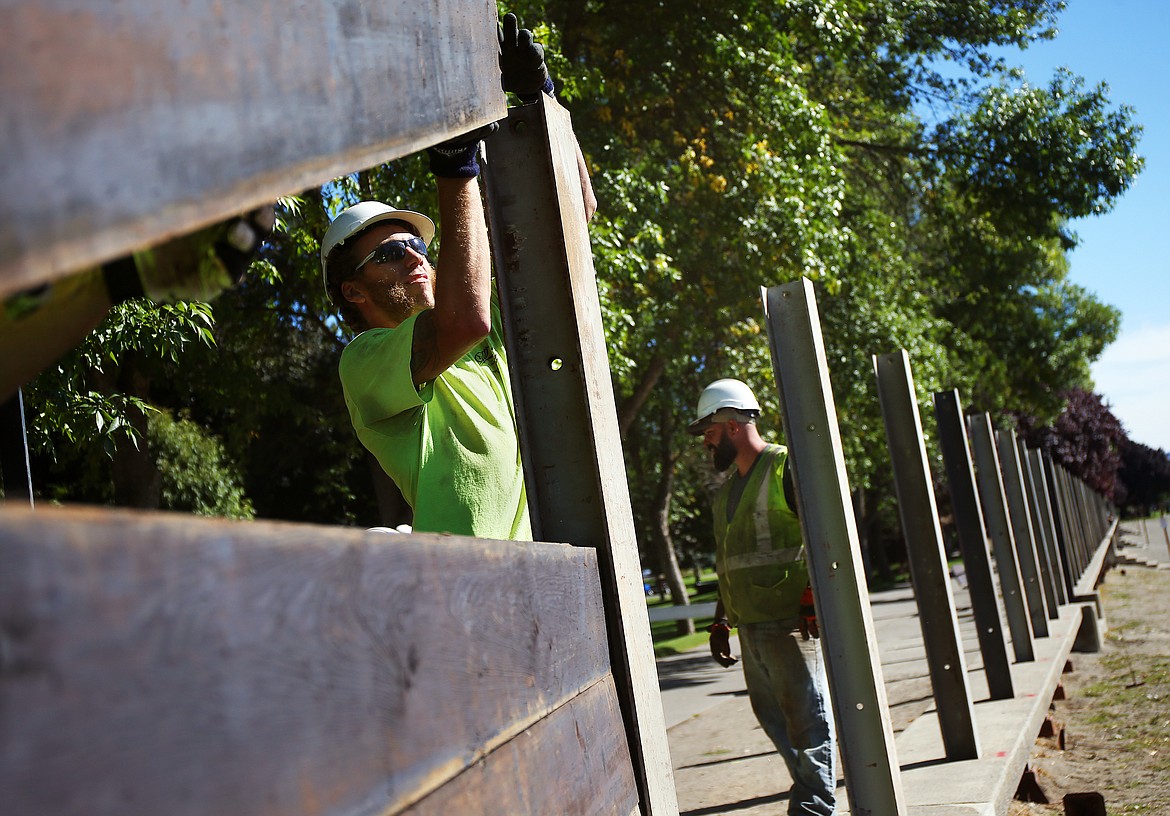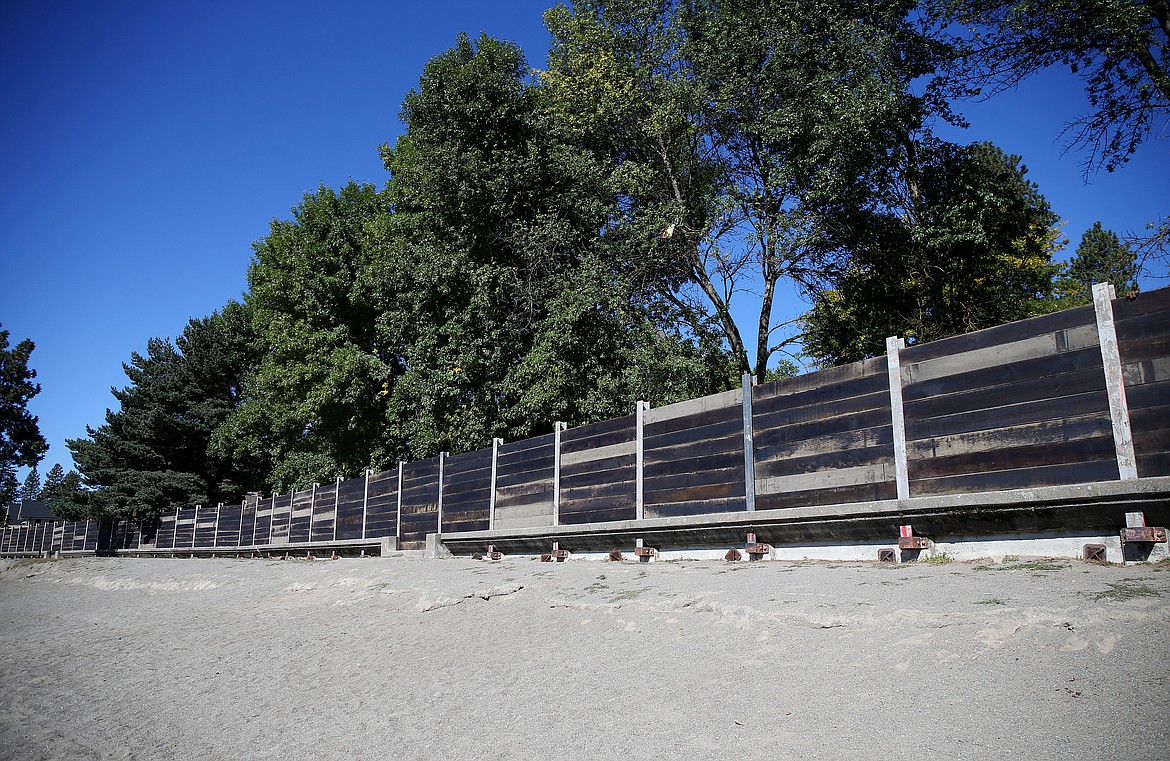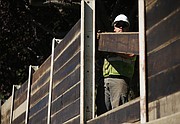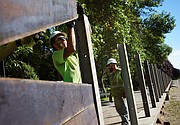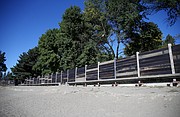Seawall gets a facelift - for just one day
The last time floodwaters pushed from Lake Coeur d’Alene into the city, Dorothy Dahlgren and her husband took their son down to the parking lot at the Third Street docks for a look.
“The water was about a foot deep,” Dahlgren recalled Tuesday. ”My son was splashing around in it. A lot of kids were.”
That was in the 1990s, when back to back 100-year floods gnawed at road beds and levees in North Idaho and swept into the living rooms of homes in low-lying areas.
The real big one, though, the December flood that changed how a modern North Idaho prepared for natural disasters, wreaked wet havoc in 1933.
“That one resulted in the building of the dike, and in 1941 the Corps of Engineers put up the seawall … and what we have today.” said Dahlgren, curator of the Museum of North Idaho.
City workers at City Park, as part of a periodic federal certification process, spent the day Tuesday erecting almost a mile of beams and planks on top of the city’s seawall that once serpentined across Northwest Boulevard to Lakeside Avenue.
The exercise was required by FEMA, the Federal Emergency Management Agency, which provides money for disaster relief and prevention.
City foreman Tim Martin said it takes his crews about 8 hours to add the beams and planks and elevate the seawall along Lake Coeur d’Alene from Hubbard Avenue at the edge of the North Idaho College campus to Lakeside Avenue.
To prepare, crews have to load the 1,700 planks, each of them 5 inches thick and about 10 inches wide — the 9-foot planks weigh around 25 pounds apiece — onto trucks from a storage unit at Ramsey Avenue. They must be shipped to City Park along with the equipment to move them.
“It took about a day and a half prep time,” Martin said.
The beams that fit into slots in the concrete sea wall elevate the wall by more than 5 feet in some places.
The seawall itself, a concrete barrier most noticeable at the edge of City Beach, was contracted in 1940 and work began Sept. 14 until its completion a year later. It was a product of the Flood Control Act of 1936, which was authorized by Congress two years later to fortify communities against high water events such as the 1933 flood that swept into low elevation areas of Coeur d’Alene.
“The project provides for a flood wall and levee along the lake and river shore the combined length of which is approximately 1 ½ miles,” according to the federal bill. “The works are designed to give a freeboard of 2 feet when the lake is at elevation 2,144 feet, which elevation is that assumed as resulting from the maximum possible flood.”
The wall is described as running from the tracks of the Spokane International Railroad, once located at Lakeside Avenue, to U.S. 95 along the Spokane River and included the seawall, as well as the levee and a “sheet pile wall.”
City crews will remove the planks and beams today and return them to storage, Martin said.
Tuesday’s wall-building project was recorded by city film crews as documentation for FEMA.
“We’re hoping we won’t have to do it every year,” Martin said.
The city levee was recertified and proven fit a few weeks ago, city engineer Chris Bosley said. The last time the seawall was recertified was in 2012.
The only problems city crews encountered Tuesday were a dozen or so bent metal sleeves used to secure the steel beams into the seawall. The sleeves were tweaked by water that froze, then expanded after seeping between the concrete and metal.
Martin said the beams designated for the holes will be modified to ensure they fit.



